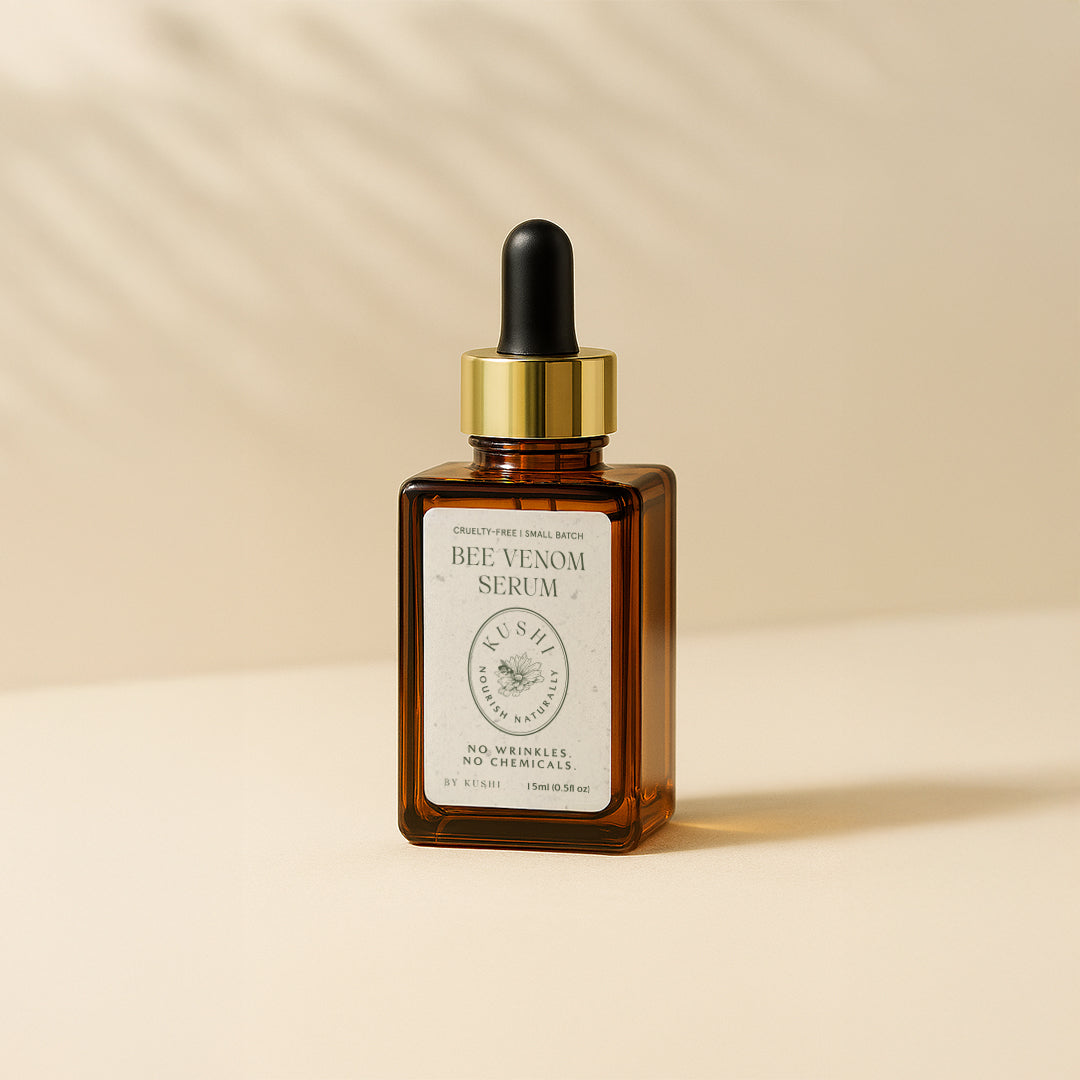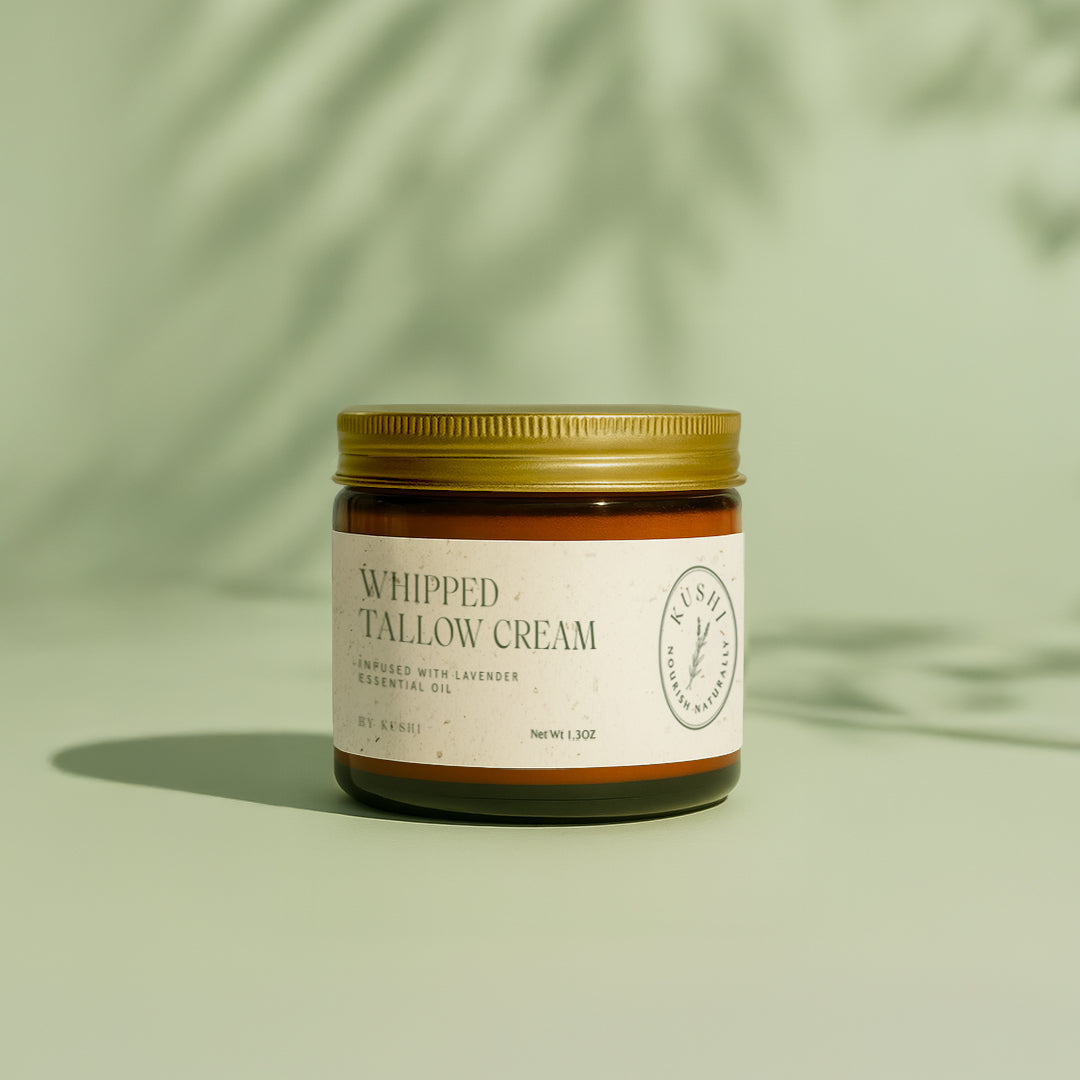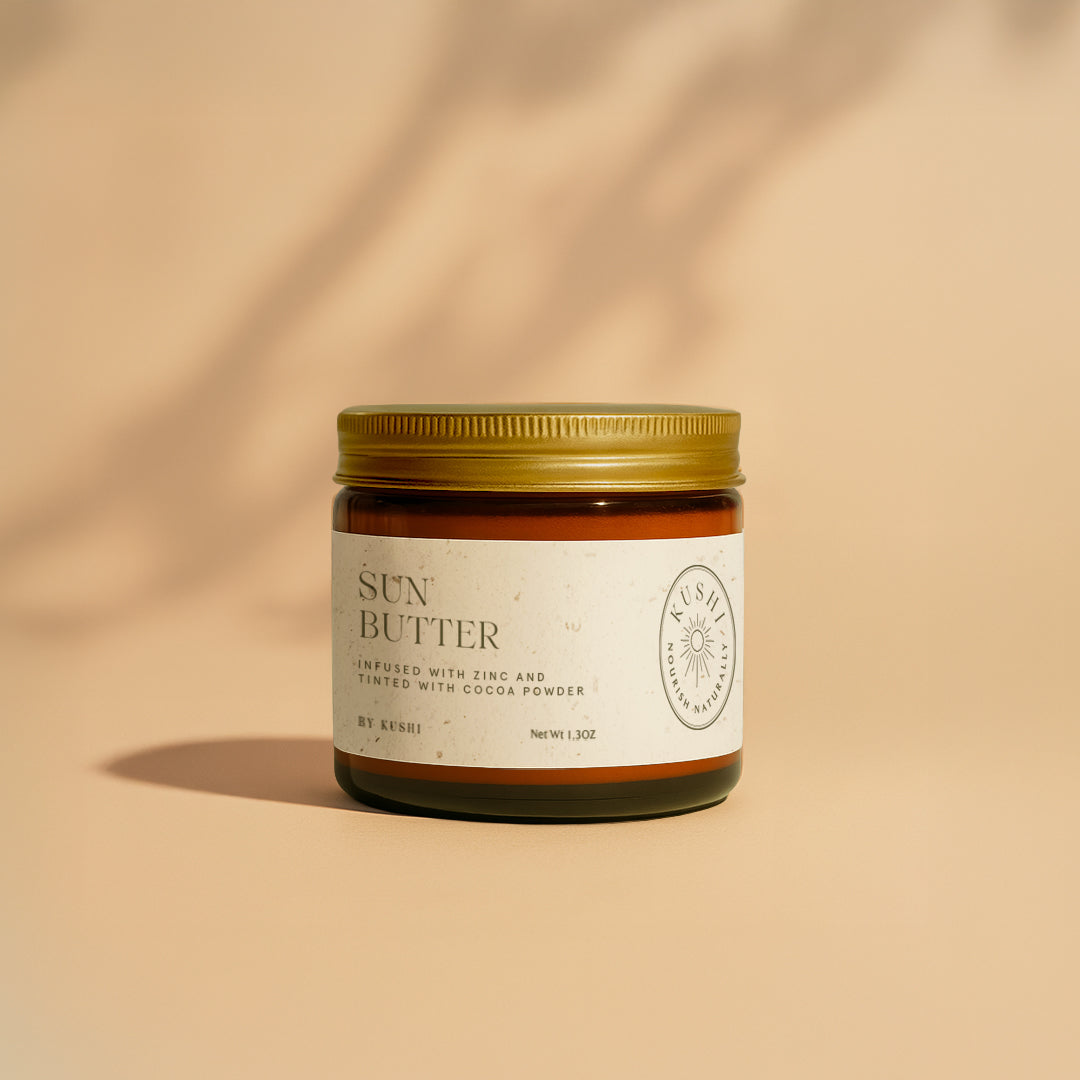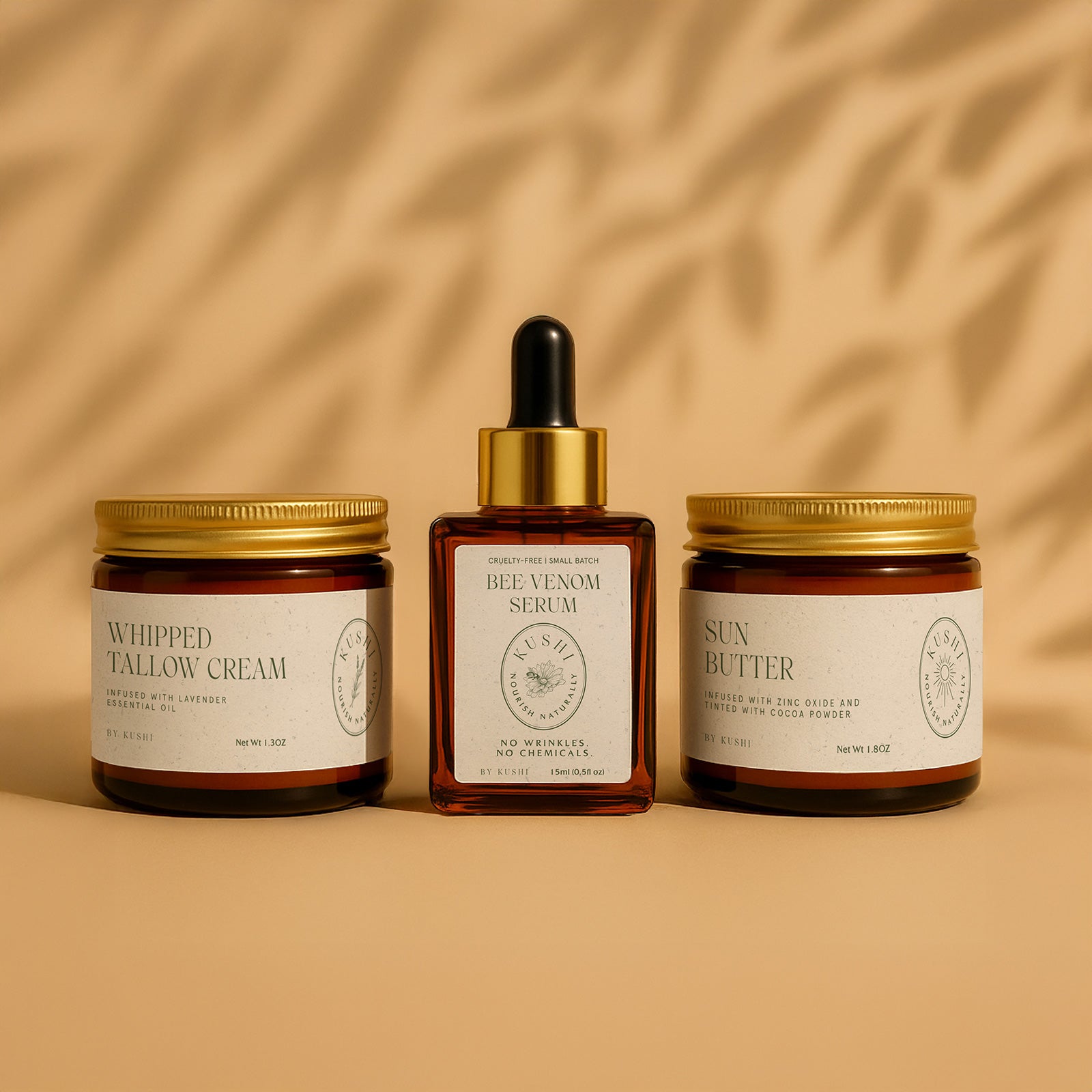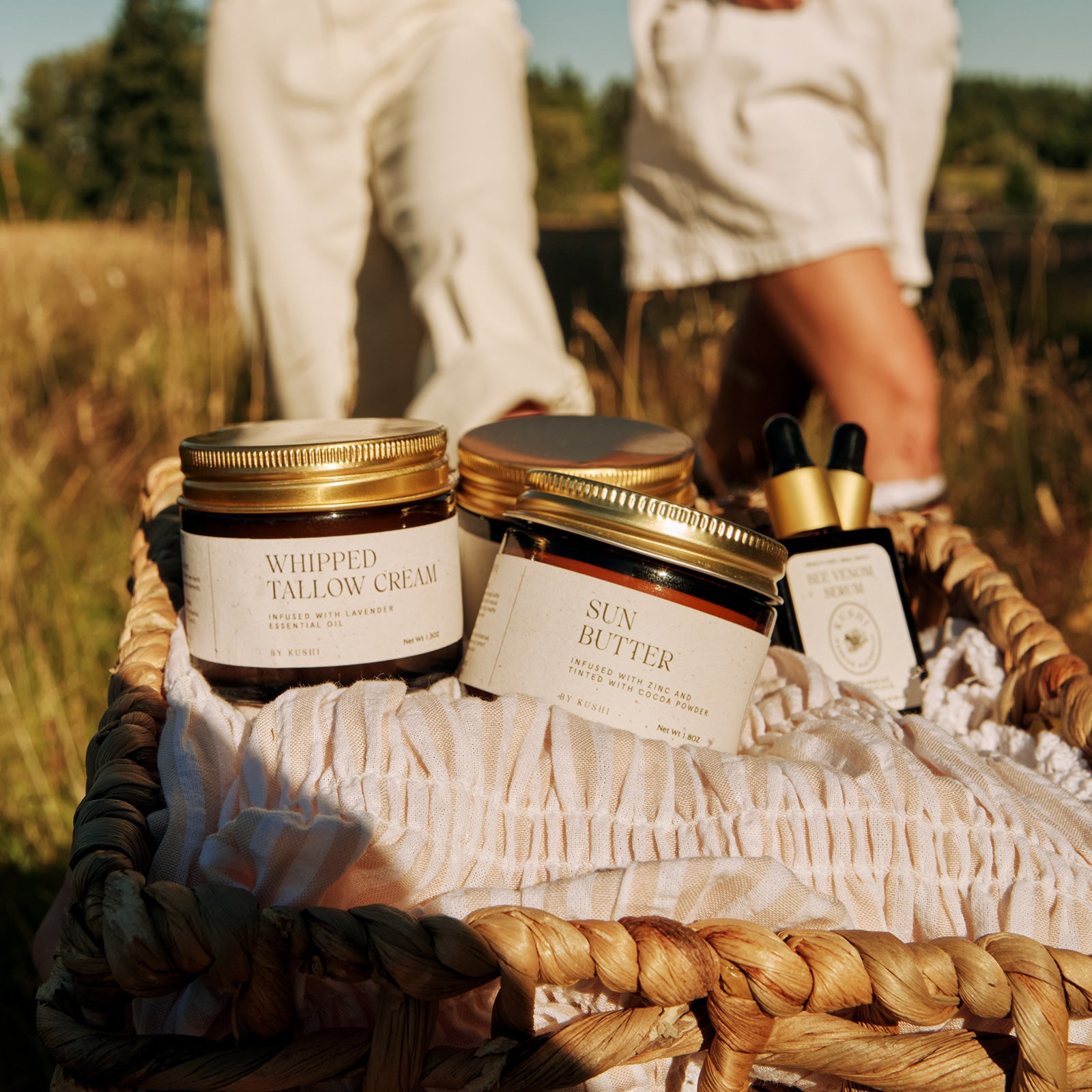Non Toxic Sunscreen
Sun protection should never come at the expense of your health or the planet’s. Traditional sunscreens often rely on chemical filters that are not only harsh on sensitive skin but also destructive to marine ecosystems. That’s why we crafted a better way to guard your skin , with nutrient-dense butters, non-nano zinc oxide, and zero synthetic fillers. Non toxic sunscreen isn’t a trend for us , it’s the standard. A product like Sun Butter reflects that belief, combining effective sun defense with intentional, skin-supportive care.
5.0 / 5.0
(5) 5 total reviews
Sun Butter
Sun Butter is a 2-in-1 tallow-based moisturizer and mineral sun balm that delivers clean, effective UVA + UVB protection using non-nano zinc oxide. Made with just five nutrient-rich ingredients—including grass-fed tallow, mango butter, and cocoa powder—it hydrates, nourishes, and defends without synthetic chemicals. Ideal for daily use and sensitive skin, it’s a safe, reef-friendly alternative to conventional sunscreen.
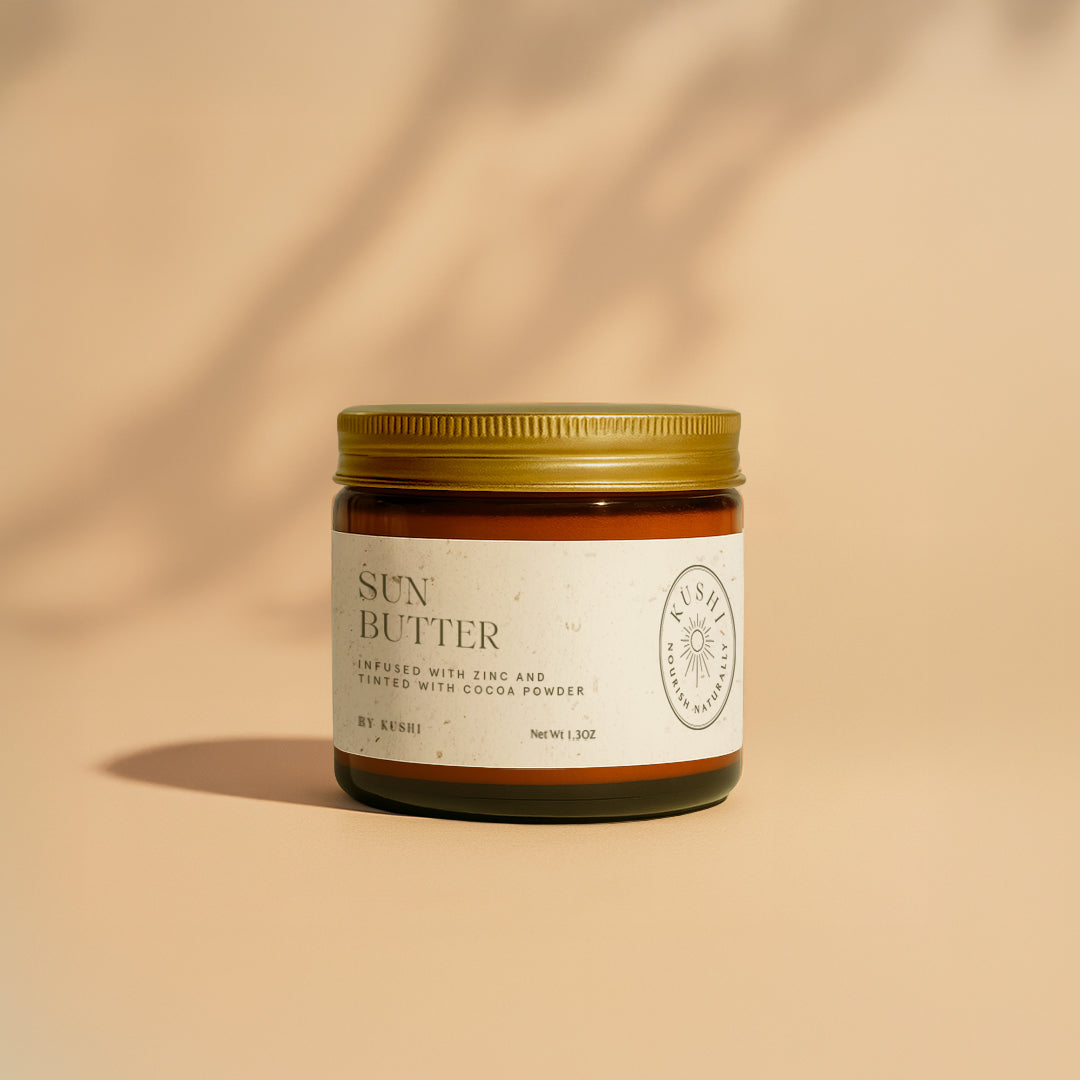
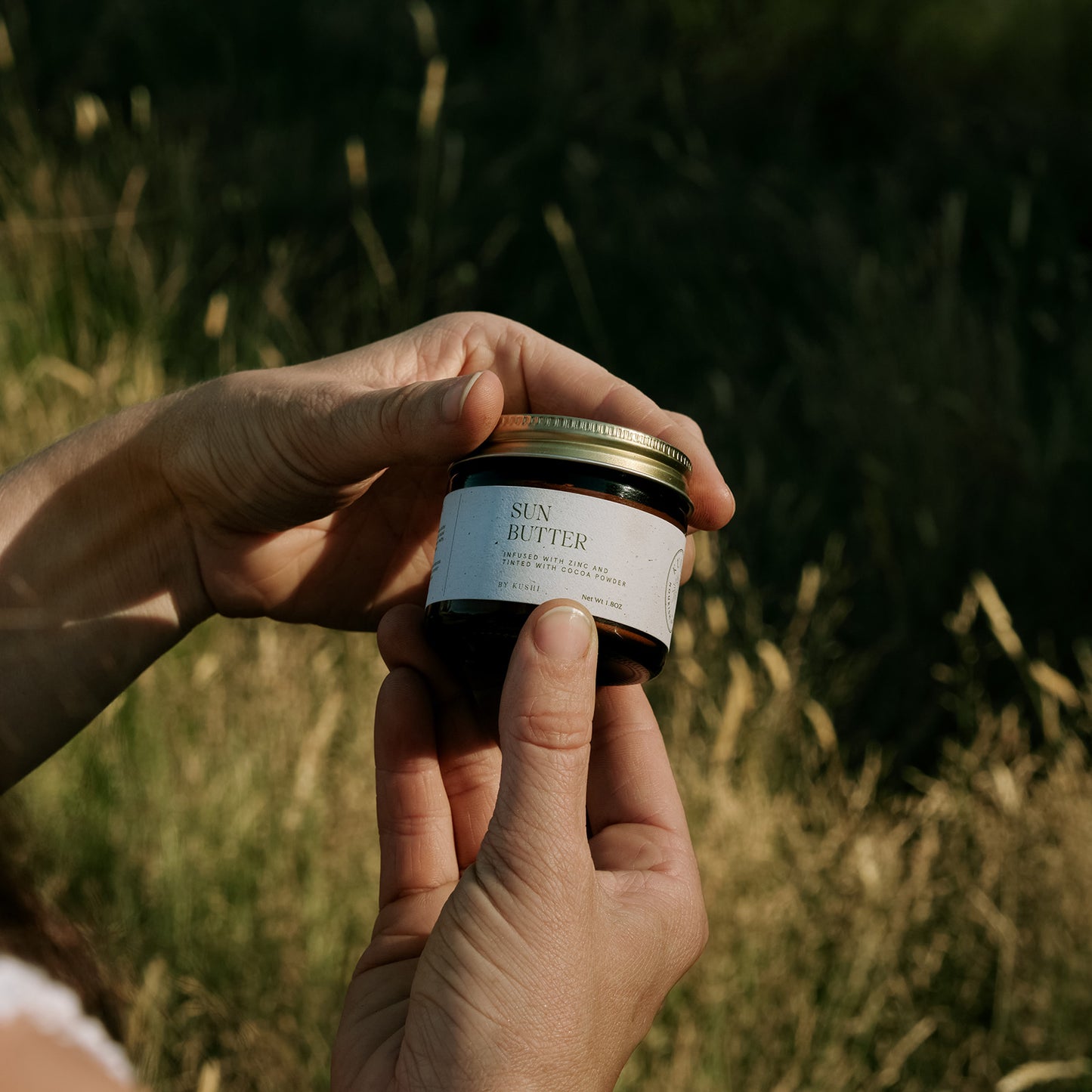
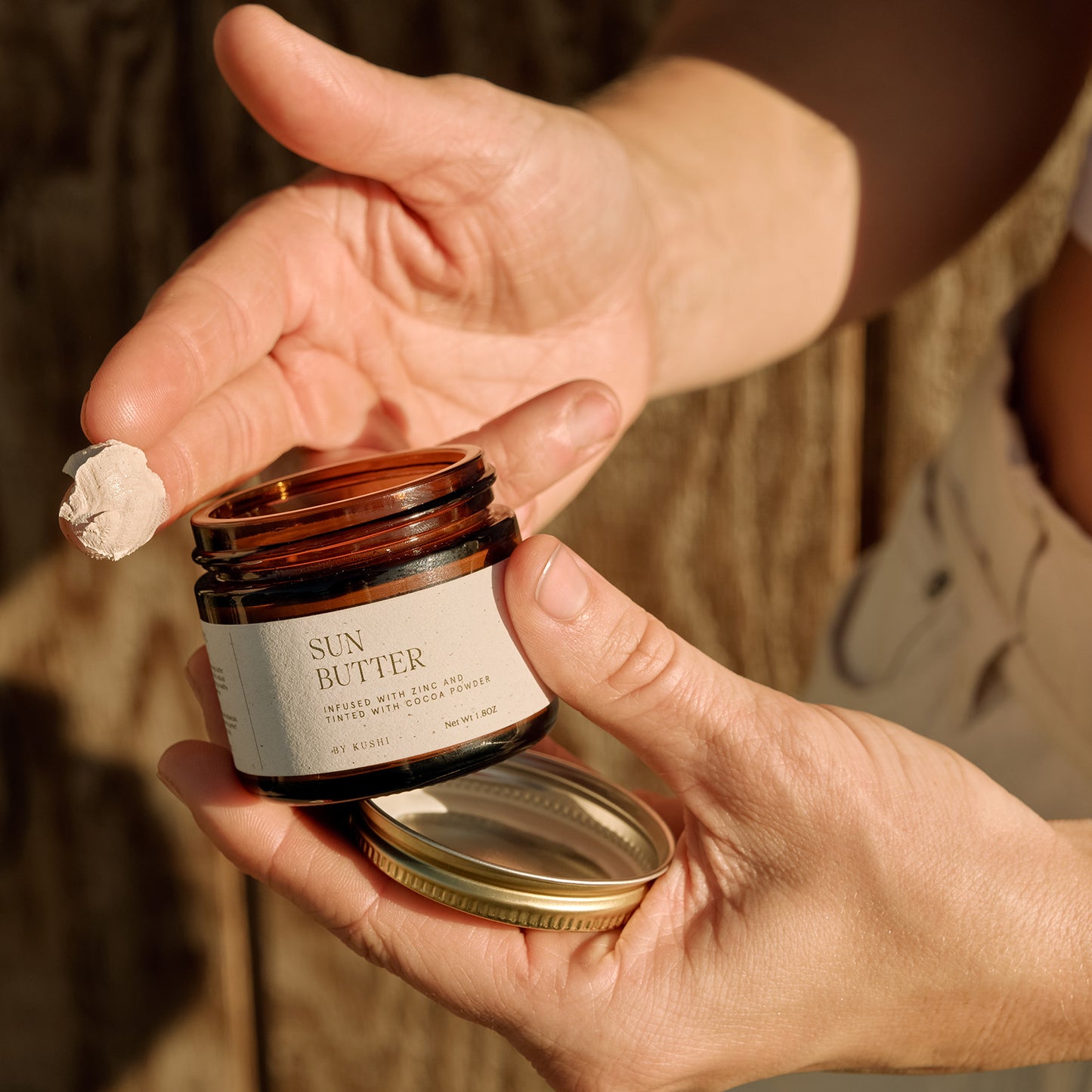
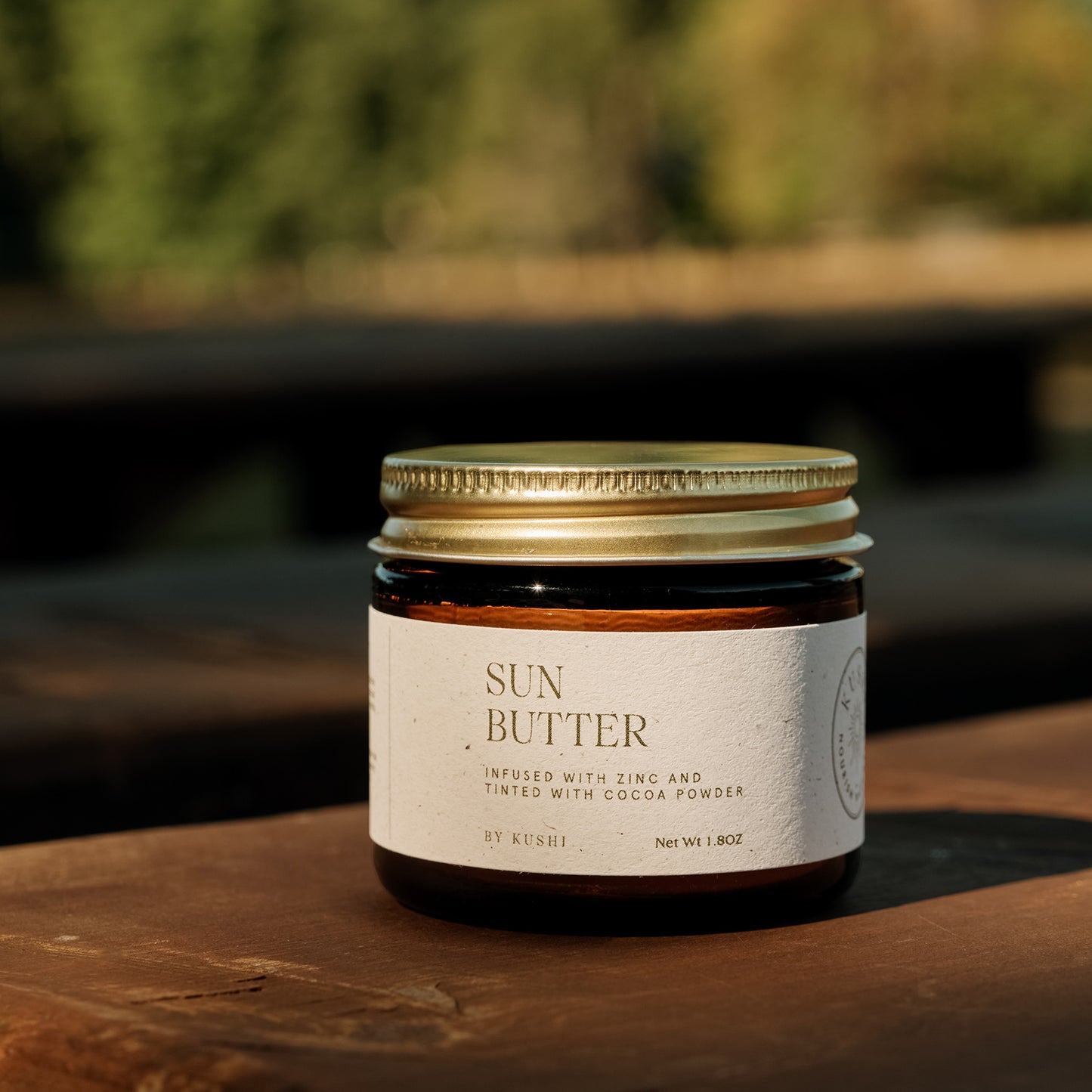
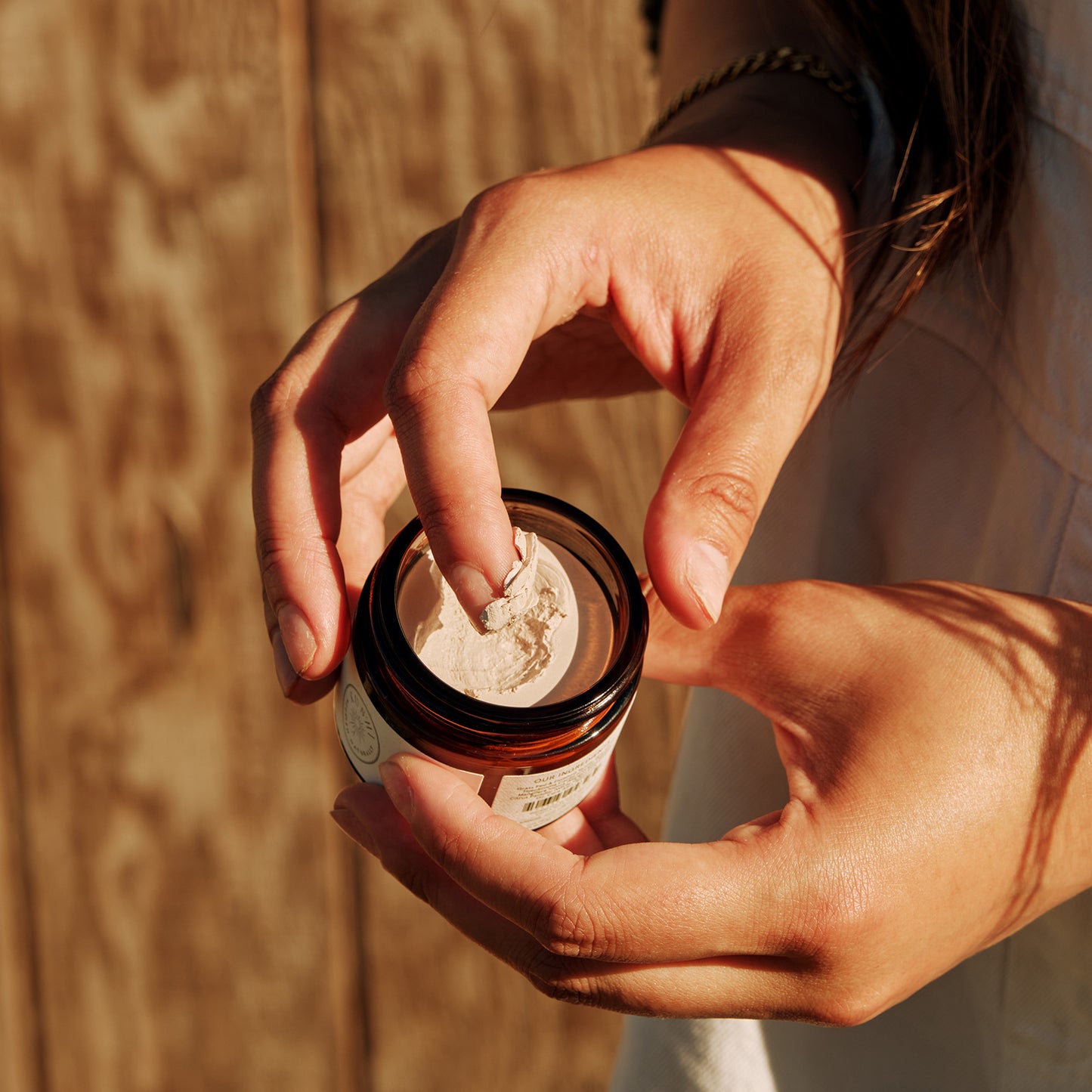


What Is Non Toxic Sunscreen?
Non toxic sunscreen is formulated without harsh chemicals that may irritate the skin or harm the environment. Unlike conventional sunscreens that often rely on synthetic UV filters like oxybenzone or octinoxate, non toxic options use mineral-based ingredients such as zinc oxide or titanium dioxide to create a physical barrier that reflects UV rays.
These sunscreens are typically free from parabens, phthalates, synthetic fragrances, and other common irritants. They're also reef-safe, meaning they won’t contribute to coral bleaching or damage marine ecosystems when washed off in the ocean.
Choosing non toxic sunscreen isn’t just about what’s left out , it’s about what’s intentionally included. Thoughtful formulas focus on skin health, gentle protection, and eco-consciousness.
Why Choose Non Toxic Over Conventional Sunscreens?
Choosing a sunscreen isn’t just about SPF. It’s also about understanding how different formulas interact with your skin and the environment. Here’s why non toxic sunscreen stands out from conventional options:
Safer UV Protection Without Chemical Absorption
Traditional sunscreens often use chemical filters like oxybenzone and octinoxate, which absorb UV rays and convert them into heat. These ingredients can penetrate the skin and have been linked to hormonal disruption and allergic reactions. Non toxic alternatives rely on physical blockers like non-nano zinc oxide that sit on the skin’s surface, offering broad-spectrum protection without being absorbed.
Gentle On Sensitive Skin
Many conventional sunscreens include synthetic fragrances, parabens, and preservatives that can irritate sensitive or acne-prone skin. Non toxic sunscreens minimize unnecessary additives and prioritize skin-calming ingredients. This makes them a safer option for daily use, especially for those with reactive skin conditions.
Better For The Environment
Chemical sunscreens don’t just stay on your skin , they rinse off into oceans and waterways. Ingredients like oxybenzone have been shown to damage coral reefs and aquatic ecosystems. Non toxic sunscreens, like Kushi’s Sun Butter, use reef-safe ingredients and biodegradable formulas that reduce environmental impact.
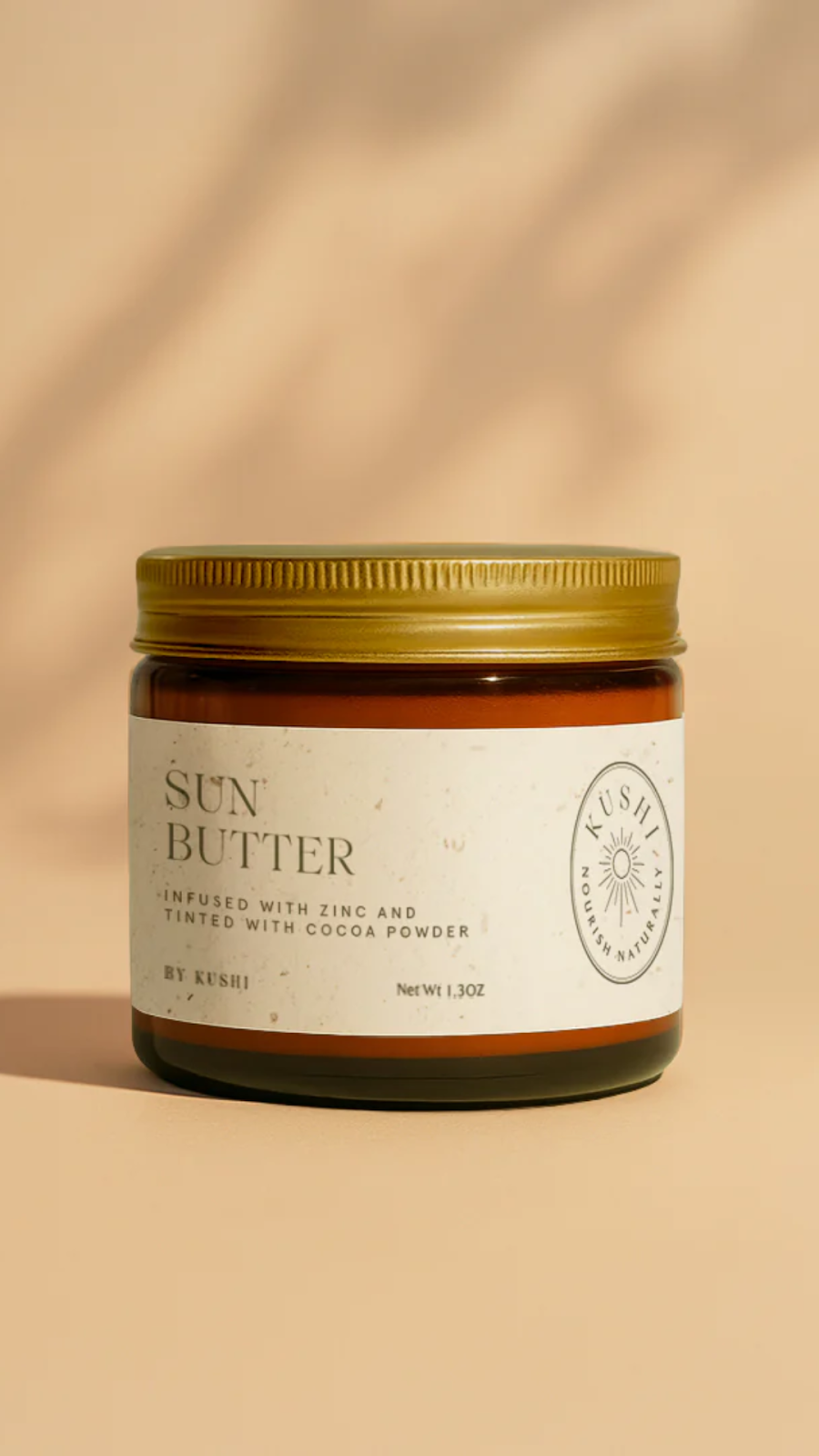
Healthy Skin Starts With Smarter Sun Care
Sun protection is one of the most important , and most overlooked , parts of a healthy skincare routine. Whether you're spending a day at the beach or just walking to your local café, your skin is exposed to UV rays that can accelerate aging and increase the risk of damage. Choosing a non toxic sunscreen like Kushi’s Sun Butter is a smart, simple way to care for your skin long term.
Daily Protection Without Compromise
A quality non toxic sunscreen doesn’t make you choose between protection and comfort. With Sun Butter, you get broad-spectrum SPF coverage in a nourishing, skin-friendly base that feels good to wear every day. It’s designed for consistency , not just occasional use.
Confidence In Every Ingredient
You deserve to know what you're putting on your skin. Kushi’s formula is free from fillers, synthetic preservatives, and hormone-disrupting chemicals , just straightforward, protective ingredients that support your skin’s natural health. It's sunscreen without second-guessing.
Small Changes Lead To Lasting Impact
Incorporating a non toxic SPF into your routine may seem like a small shift, but it sets the tone for a more conscious, holistic approach to self-care. You’re choosing skin health, environmental responsibility, and product integrity , all in one step. And that’s something worth sticking with.
Ready to explore a better kind of sun care? Try Kushi’s Sun Butter and make the switch for good.
Key Ingredients To Look For In Non Toxic Sunscreens
Not all “clean” sunscreens are created equal. To make an informed choice, it helps to know which ingredients truly support safe, effective sun protection. Here are the core components you should expect to see in a high-quality non toxic sunscreen:
Non-Nano Zinc Oxide
Zinc oxide is a mineral UV filter that provides broad-spectrum protection against both UVA and UVB rays. Non-nano means the particles are large enough to stay on the surface of the skin rather than being absorbed. It’s a trusted ingredient for sensitive skin, offering reliable protection without compromising skin health or marine ecosystems.
Plant-Based Oils And Butters
Ingredients like shea butter, coconut oil, and jojoba oil help nourish the skin while maintaining the sunscreen’s texture and spreadability. These botanical oils are rich in fatty acids and antioxidants that support hydration and barrier function. They also allow the sunscreen to glide on smoothly without clogging pores.
Natural Waxes And Emulsifiers
Beeswax or plant-derived waxes are often used to help bind the formula and create a water-resistant finish. These components improve wear time and texture without relying on synthetic stabilizers or silicones. They contribute to a smoother application and help the sunscreen stay in place longer, even with sweat or water exposure.
Vitamin-Rich Additives
Non toxic sunscreens often include naturally sourced vitamins like Vitamin E for antioxidant protection. These nutrients help fight free radical damage and calm inflammation from sun exposure. They offer additional skin benefits beyond UV defense.
Kushi’s Sun Butter includes a thoughtful combination of these ingredients, creating a formula that’s effective, safe, and nourishing.
Meet Sun Butter By Kushi
Finding a non toxic sunscreen that actually feels good on your skin is rare , and that’s where Kushi’s Sun Butter comes in. This rich, protective formula combines mineral-based UV defense with deeply nourishing botanicals. It’s designed to deliver reliable sun protection while aligning with your clean beauty values.
Mineral UV Protection You Can Trust
At the heart of Sun Butter is non-nano zinc oxide, offering broad-spectrum SPF that reflects harmful UVA and UVB rays. This physical barrier stays on the skin’s surface and starts working immediately after application , no wait time, no chemical absorption.
Ultra-Nourishing Texture
Sun Butter blends organic shea butter, coconut oil, and other plant-based emollients to create a smooth, balm-like texture that melts into the skin. It’s deeply hydrating but not greasy, making it suitable for daily wear , even under makeup.
Safe For All Skin Types
Whether your skin is dry, sensitive, or prone to breakouts, Sun Butter is formulated to soothe and protect. There are no synthetic fragrances, no preservatives, and no irritants , just clean, conscious care.
Reef-Friendly And Biodegradable
Sun Butter doesn’t just protect your skin , it protects the ocean, too. Free from coral-harming chemicals and made with eco-safe ingredients, it’s a sunscreen you can feel good about washing off at the beach.
How To Use Non Toxic Sunscreen Effectively
Even the best sunscreen can’t protect your skin if it’s not applied properly. Non toxic formulas, especially mineral-based ones like Kushi’s Sun Butter, work a bit differently from chemical sunscreens , and understanding how to use them makes all the difference. Here’s how to get the most out of your non toxic SPF:
Apply Generously And Evenly
Because mineral sunscreens sit on top of the skin rather than absorbing into it, full and even coverage is essential. You’ll want to apply enough product to form a visible layer before gently rubbing it in , don’t skimp. Make sure you cover high-exposure areas like the tops of ears, back of your neck, shoulders, and hands, which are often forgotten but just as vulnerable to UV damage.
Use It As The Final Step In Your Skincare Routine
Non toxic sunscreen should be the last step in your skincare routine, right after your moisturizer. It acts as a physical shield, so applying it last helps maintain its effectiveness. Kushi’s Sun Butter blends smoothly and won’t pill under makeup, making it easy to wear daily without disrupting your usual regimen.
Reapply Every 2 Hours
To maintain protection, especially outdoors, reapplication is key. Mineral formulas can wear off due to sweat, swimming, or even just touching your face. Keep a travel-friendly tin of Sun Butter in your bag so you can top up every two hours and stay consistently protected.
Read Also:
- Skin Care Products For Women
- The Best Ingredients To Repair & Strengthen Your Skin Barrier
- Smooth Skin Products
Sources:
- Ryu, H. J., Seo, M. Y., Jung, S. K., Maeng, E. H., Lee, S. Y., Jang, D. H., Lee, T. J., Jo, K. Y., Kim, Y. R., Cho, K. B., Kim, M. K., Lee, B. J., & Son, S. W. (2014). Zinc oxide nanoparticles: A 90‑day repeated‑dose dermal toxicity study in rats. International Journal of Nanomedicine, 9(Suppl 2), 137‑144. https://doi.org/10.2147/IJN.S57930
- Conway, A. J., Gonsior, M., Clark, C., Heyes, A., & Mitchelmore, C. L. (2021). Acute toxicity of the UV filter oxybenzone to the coral Galaxea fascicularis. Science of the Total Environment, 796, 148666. https://doi.org/10.1016/j.scitotenv.2021.148666
- Miller, I. B., Pawlowski, S., Kellermann, M. Y., Petersen‑Thiery, M., Moeller, M., Nietzer, S., & Schupp, P. J. (2021). Toxic effects of UV filters from sunscreens on coral reefs revisited: Regulatory aspects for "reef safe" products. Environmental Sciences Europe, 33, Article 74. https://doi.org/10.1186/s12302-021-00515-w
- Vinardell, M.-P., Martínez‑Hidalgo, E., Fröhlich, E., & Mitjans, M. (2017). In vitro comparative skin irritation induced by nano and non‑nano zinc oxide. Nanomaterials, 7(3), 56. https://doi.org/10.3390/nano7030056
Frequently Asked Questions
Is non toxic sunscreen safe for babies and young children?
Yes, most non toxic sunscreens are safe for children, especially when made with simple, mineral-based ingredients like non-nano zinc oxide. Always check the label to ensure it’s pediatrician-approved and fragrance-free for the most sensitive skin.
Can non toxic sunscreen be used on oily or acne-prone skin?
Absolutely. Look for lightweight, non-comedogenic formulas that don’t contain pore-clogging oils. Many non toxic sunscreens actually help calm inflammation and reduce redness associated with breakouts.
Does non toxic sunscreen leave a white cast?
Some mineral sunscreens can leave a mild white tint due to zinc oxide, but modern formulations are improving texture and blendability. Warming the product between your hands before applying can also help it melt into the skin more easily.
Is non toxic sunscreen effective in high sun exposure conditions?
Yes, as long as you’re using a broad-spectrum SPF 30 or higher and reapplying as directed, non toxic sunscreens provide solid protection , even at the beach or during sports. It’s important to choose a water-resistant formula for those conditions.
Can I use non toxic sunscreen under makeup?
Yes, many non toxic sunscreens are formulated to work well under makeup without causing pilling or excessive shine. Opt for a matte finish version or allow a few minutes for the product to absorb before applying foundation.
How is non toxic sunscreen different from “natural” sunscreen?
The term “natural” isn’t regulated and can be used loosely in marketing. “Non toxic” typically refers to sunscreens made without harmful or questionable ingredients, offering a more meaningful standard of safety and transparency.
